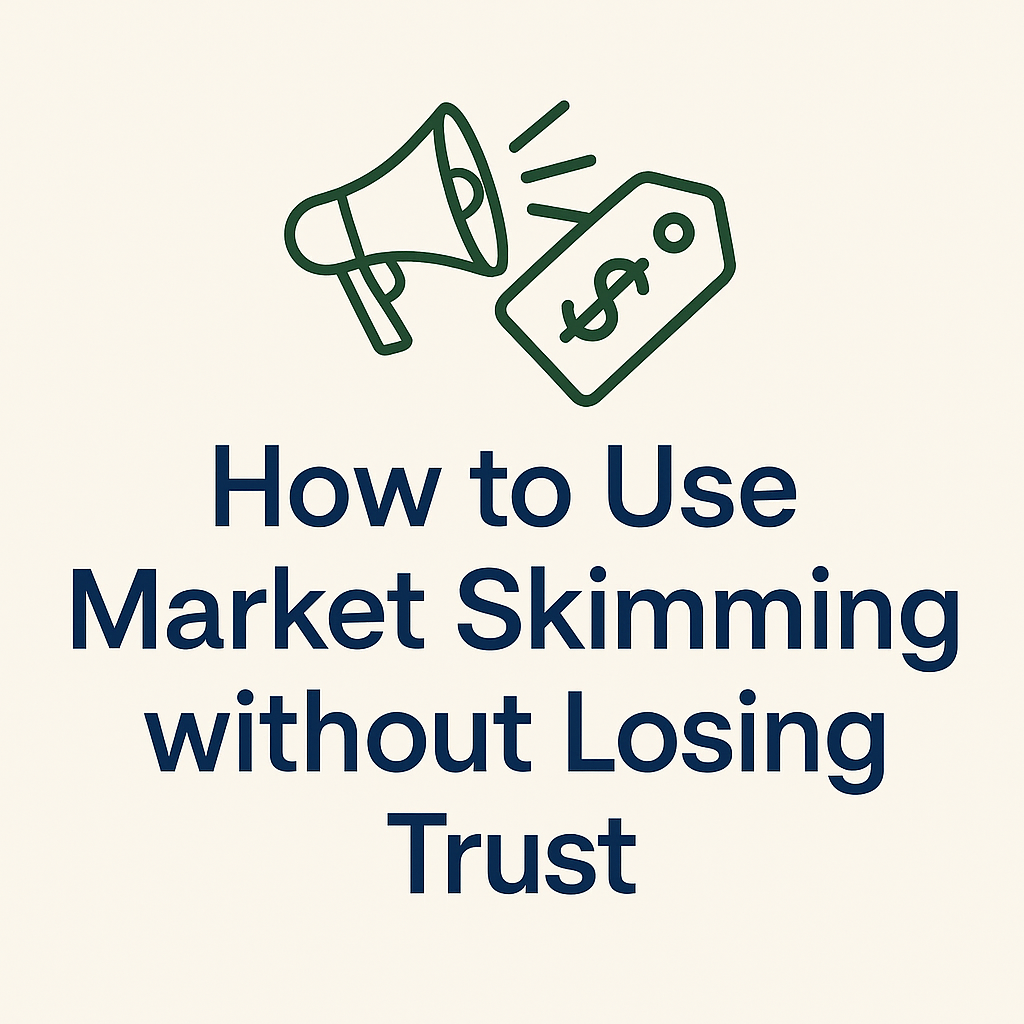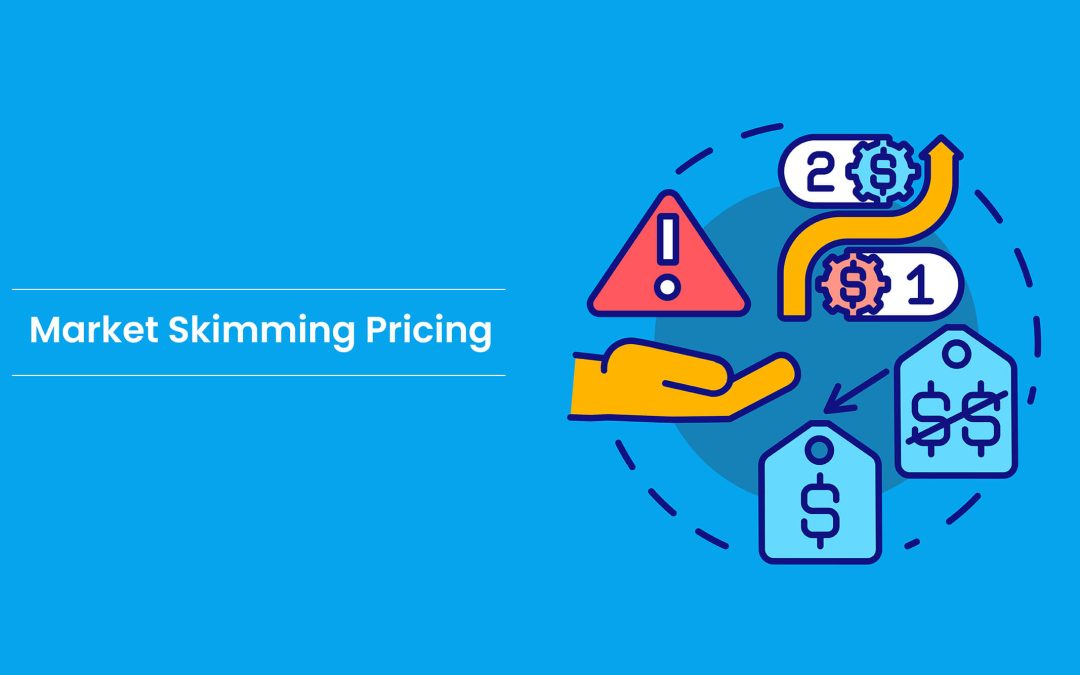What Is Market Skimming?
Market skimming, also known as skimming pricing strategy, involves introducing a new product or service at a high price To grab the most cash from those early birds, the price starts off pretty high. Once those folks are taken care of or more competitors jump in, the price gets lowered little by little to pull in customers who are more budget-conscious.This phased approach allows companies to “skim” the maximum amount of revenue from different layers of the market.
This strategy is commonly observed in industries characterized by rapid innovation and high research and development costs, such as consumer electronics (think new smartphone launches), cutting-edge software, high-end fashion, and luxury goods. Some industries really take advantage of the status and value that come with a high starting price. It’s also worth noting the difference between market skimming and penetration pricing. With skimming, you kick things off with a high price and gradually lower it, while penetration pricing starts low to grab market share quickly and keep competitors at bay. Each strategy serves different market entry objectives and requires distinct approaches to customer engagement and pricing adjustments.
Why Brands Choose Market Skimming
Brands choose market skimming for a bunch of smart reasons, mainly to boost their profits and grab a strong foothold in the market right from the start.
Maximize Early Profit from Early Adopters
The main reason for market skimming is to take advantage of early adopters who are willing to pay extra just to have the latest and greatest. These folks usually don’t mind spending more because they’re drawn to the excitement of something new, the prestige that comes with it, and the chance to be the first to try it out. By hitting them with a high starting price, companies can quickly recover their development costs and make good profits right off the bat.
Reinforce Premium Product Positioning
A high launch price inherently signals quality, innovation, and exclusivity. This premium launch strategy helps to position the product and the brand as high-value and desirable. Basically, this way of thinking can lead to a halo effect, making the product look cooler and more high-tech than what other brands offer, even if the tech is pretty similar. It helps boost the brand’s image as a top player in the industry.
Fund Future Development or Broader Distribution
The substantial revenue generated from early sales can be reinvested into further research and development, enabling the creation of next-generation products or improvements to the current offering. Instead, these profits can help boost marketing efforts, open up more distribution options, or create new products and services that go hand in hand, all of which can lead to long-term growth and really solidify a company’s spot in the market.
The Risk—How Market Skimming Can Hurt Loyalty
Market skimming can be really beneficial, but it also comes with some risks, especially when it comes to keeping customers loyal and how they view the brand. If it’s not handled well, this approach might hurt long-term relationships with customers.
Perceived Unfairness by Loyal Customers
When prices are lowered shortly after an initial high-priced launch, customers who paid the premium price may feel that they were treated unfairly. This perception of inequity can breed resentment, especially among the very early adopters who were most enthusiastic about the product. They might feel penalized for their early support and loyalty.
“Overpay” Regret and Damage to Trust
When people feel like they’ve paid too much, it can lead to “buyer’s remorse” or just feeling regret about overpaying. This kind of negative feeling can really hurt the trust they have in the brand. If customers think the brand intentionally ripped them off, they might hesitate to buy future products at high prices, which could mess up any plans to charge more later and hurt the brand’s reputation. In the end, this all impacts trust and pricing pretty heavily.
Makes Early Adopters Feel Penalized if Pricing Drops Quickly
The main issue is that early adopters, who are usually the most enthusiastic and influential, can feel like they’re footin’ the bill for later customers. If prices drop too fast or too much, these initial fans might feel taken advantage of. This can really hurt their willingness to back the brand and make them hesitant about joining in on future premium launches, which can affect brand loyalty and how people see pricing overall.
How to Use Market Skimming Without Losing Trust
Pulling off a market skimming strategy without upsetting customers is all about finding the right mix of high prices, open communication, and added perks. The aim is to make those early adopters feel appreciated, not taken advantage of.
Be Transparent About Premium Launch Value (Early Access, Bundles, Exclusives)
Make it clear why the starting premium price is worth it. You could offer early access to the product, throw in some cool accessories or services, or give out unique content or experiences that people can’t get anywhere else.Highlighting these added benefits helps justify the higher price point and frames it as a package of value, not just a high cost.

Offer Value-Added Perks for Early Adopters (Support, Upgrades, VIP Treatment)
Go beyond the product itself by offering tangible perks to those who purchase at the initial high price. This could mean having special customer support hotlines, getting first dibs on future updates or upgrades, exclusive invites to brand events, or cool perks from loyalty programs. These rewards show that we really appreciate their early support, helping create a sense of belonging and ongoing value.
Use Messaging That Emphasizes Exclusivity, Not Exploitation
Craft marketing messages carefully to highlight the exclusivity, innovation, and prestige associated with being an early adopter. Frame the pricing strategy as an opportunity to be part of an elite group experiencing cutting-edge technology first. Avoid language that suggests a “limited-time only” high price, which can imply future discounts are inevitable and exploitative. Instead, focus on the unique benefits and status conferred by early adoption.
Smart Timing for Price Adjustments
The success of a market skimming strategy really comes down to when you decide to change your prices. If you drop your prices too soon, you might lose that premium feel, but if you wait too long, you could end up missing out on a larger crowd.Strategic timing is key to maintaining both profitability and customer loyalty.
How Long to Keep the Skimming Price Before Adjusting
There’s no one-size-fits-all answer, but a common approach is to keep the price high for a while to grab the attention of excited early fans and recover a good chunk of R&D costs. This could be anywhere from a few months to over a year, depending on how long the product lasts, what’s going on in the market, and what competitors are up to. The trick is to watch how demand shifts and what competitors are doing.
Look at Product Lifecycle + Adoption Curve
The ideal time to adjust pricing is often dictated by the product’s position in its lifecycle and the rate of market adoption. As the product moves from the introduction phase into the early growth phase, and as the initial wave of early adopters is satisfied, demand from less price-sensitive segments may begin to wane. This is often a natural point to consider a price reduction to attract the next tier of buyers, such as the early majority.
Communicate Price Drops as Planned Expansions, Not Discounts
When it’s time to drop the price, think of it as a way to make the product more accessible instead of just a discount. Let people know that this price cut is part of a plan to help more folks get their hands on this cool product. You can connect it to new features coming out, spreading it to more stores, or just the natural way prices change as the product gets more established in the market. Transparency about this planned evolution helps manage customer expectations and prevents the perception of a sudden, arbitrary price cut.
Case Studies & Real-World Examples
Examining how other brands have navigated market skimming provides valuable insights into successful implementation and the importance of maintaining brand loyalty.
Example 1: Tech Device Launch with Staged Pricing
When a company rolls out a new high-end smartphone, they usually start with a high price tag to attract the tech enthusiasts and early adopters who are eager for the latest features and want to show off the brand. After a few months, once the hype dies down and a new model is about to drop, they often knock off around 10-15% from the price.This makes it more appealing to everyday consumers who were holding out for a better deal. This way, the company can rake in revenue from different groups while still showing that they’re committed to innovation.
Example 2: Wellness Brand That Bundled Value at Launch
A premium wellness supplement brand could roll out a new, high-tech product priced on the higher side. To make it worth it, they might offer a cool “Founder’s Bundle” that includes the product, a one-on-one chat with a nutritionist, and special access to a private online community for a short time. This bundle adds a ton of value beyond just the product, helping to make that premium price feel more reasonable. Later on, they might sell the product at a lower price without all the extras, making it more accessible to a broader audience.
Example 3: Loyalty Rewards for Early Buyers Post-Price Drop
Picture this: a gaming company launches a new console and sets the price pretty high. A few months later, they decide to lower it a bit. To show some love to those early buyers who paid full price, they could hook them up with a special voucher for a future game download or some cool in-game stuff. It’s a nice way to say thanks and help them feel better about the price drop, keeping their loyalty intact even after the change.
Conclusion: Skim Strategically, Build Loyalty Long-Term
Market skimming can be a great way to make quick profits and build a strong brand image. But for it to really work, keeping customers loyal as prices change is key. If done with care and good planning, market skimming can go hand in hand with solid customer relationships.
Brands need to think carefully about their messaging and pricing strategy from the get-go. Knowing how pricing affects what customers think about a brand is super important. By showing off the value, throwing in a little something extra for the first buyers, and bumping up prices at just the right time, businesses can ride the waves of market skimming without pushing away their loyal fans.
